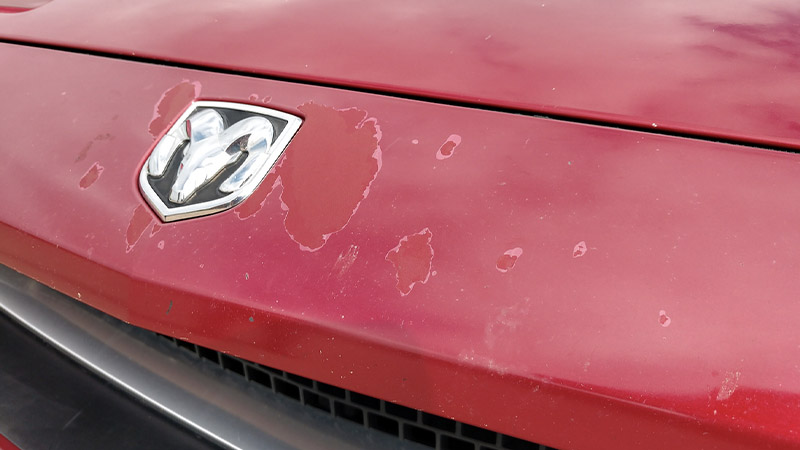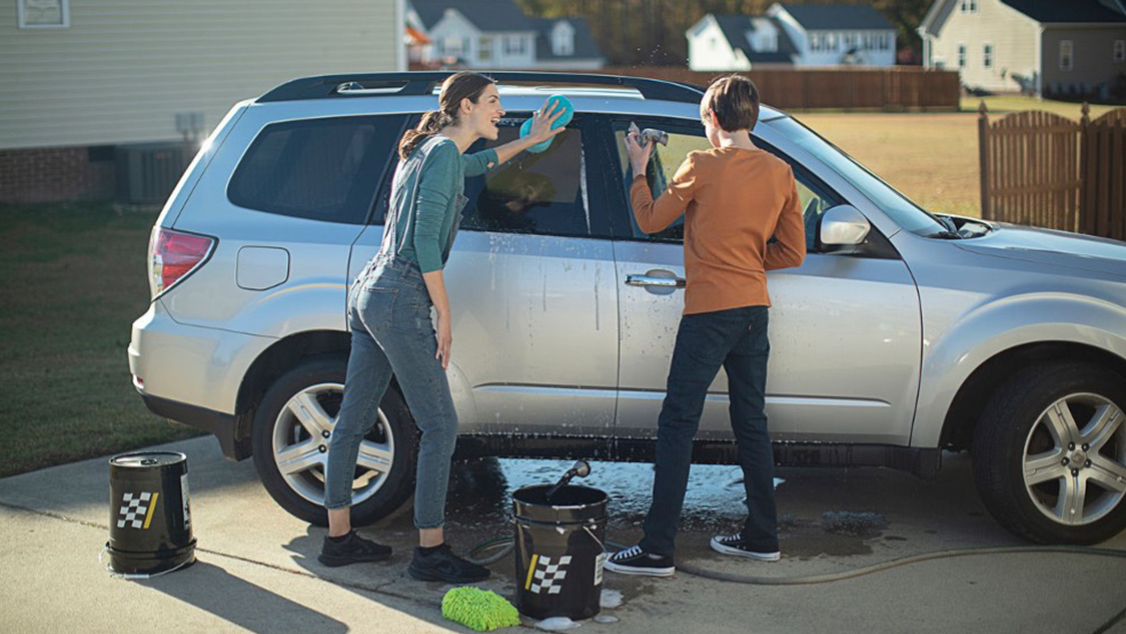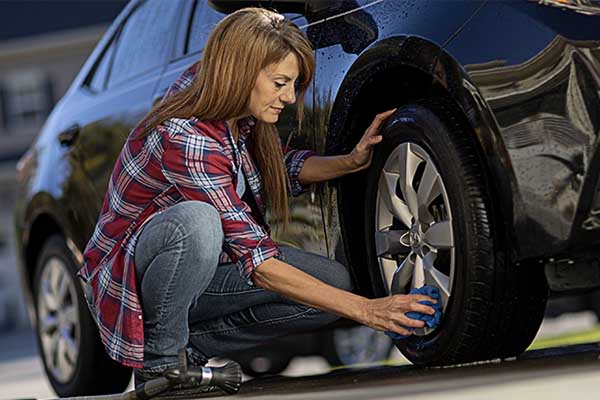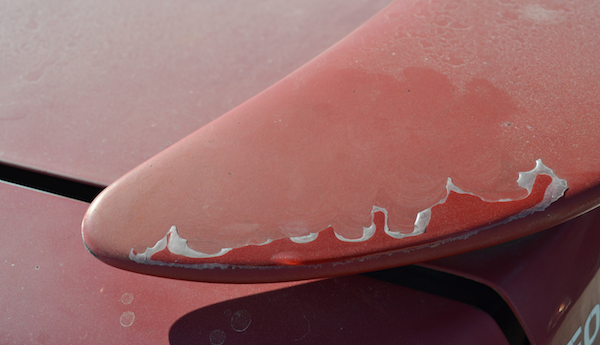We've all seen it before. A new car, maybe only a year old, looking absolutely filthy as if the owner has never washed it. Maybe it's a white car that's now some kind of sad eggshell tinted with asphalt. Or it's what should be a brilliant color, but the paint looks about as reflective as primer. This is a car that's never been washed. Here's a look at what goes wrong when you leave it to the rain, and how to not be that car.

Source | Getty Images
NEW CAR, LOOKS GROSS
Car finishes typically involve primer over the metal or plastic body panels, one or more layers of paint, and a layer of clear coat. Despite the thin layers, the factory finish is a quality piece of protection that just happens to look good.
“The car finishes from the manufacturers today are really good," said Michael Schultz, Senior Vice President of Research & Development at Turtle Wax. “A good paint job will probably last 12 to 15 years." Schultz added that the key to that long life is through additional protection. The factory finish looks excellent because modern factories are impeccably clean, while the outside world is often gross and damaging.
“Now, will the paint fall off if you don't wax it? Absolutely not. But in two or three years, it could get lots of swirls and scratches. That's the biggest problem that happens with these clear coats, especially on darker cars. Then you get low reflectivity off the surface and it looks dull, it looks terrible."
Schultz said there are all kinds of damaging environmental conditions to watch out for. You might be thinking of dirt and road grime but there are also bird droppings and UV damage from sunlight to think about. These can damage the shine of your car and create a bunch of work to fix that damaged factory clear coat. Next, there are diesel particulates in the air, other staining and etching pollutants in the rainwater, and he's even seen autumnal leaf drop leave stains on a vehicle. Then there's possibly the nastiest offender of all: road salt.

Read more about peeling clear coat and how to fix it. | Source: Andy Jensen
“The metal chloride in the road salt acts as a conductor of electricity, so you've got different potentials of metals between different surfaces on the car," said Schultz. “Leaving that on the car can set up the potential for degradation, especially of exposed metals like the undercarriage."
Road salt is a primary driver of rust, as the combination of wetness, slightly corrosive oxygen, and chemistry-altering salt can quickly lead to corrosion and the beginnings of rust after just a few winters. It's not just bare metal that's affected, as this nasty stuff can damage the paint, too. It can cause your vehicle to hold on to lots of water instead of shedding it off in large beads.
“It acts like flypaper for environmental contaminants that can cling to the finish and accelerate the degradation of the paint. A lot of people don't realize that paint degradation isn't just at the surface. Once that degradation starts, it's more like fissures. The acids, and some of the alkaline materials, will etch irregularly on the surface, so some of those defects can go deep down."
Ever waxed a car, then been disappointed that it looked dull only a week later? Schultz said that the paint fissures damage the ability of the paint to hold on to the wax, similar to how you need to prep a surface for painting in order for it to stick. Your lack of preventative maintenance means permanent paint damage.

Source | Advance Auto Parts
YOU'RE NOT LAZY, JUST BUSY
You probably already know you should be regularly washing and waxing your vehicle. But, the time, right? Between work, side grind, family, social life, and chores, there's already way too much on your plate. You're not alone, but there are some solutions.
Schultz explained: “The best thing that I tell people is, it's not whether you're into liquid or paste or spray wax, it's a regular car care regimen."
Here's how to work regular paint care into your busy life.
HIT THE EASY BUTTON
If you think of exterior maintenance as smearing paste wax all over your ride, then tediously buffing it out, you're in for a pleasant surprise. While paste wax is still in demand, the mainstream products are now much easier to use and less labor-intensive and time-consuming. Liquid waxes are easier to apply, but the spray wax is the King of Easytown. The directions vary by the bottle, but typically it's all of: “Spray onto the paint. Buff to a shine."
“We're making a lot of products that are convenient and easy to use, like spray waxes that literally save you time," said Schultz. “You just spray it on, and you can just put a layer between the paint and the elements that will preserve the shine and help prevent those stains from taking their toll on your car."
USE 2-IN-1 PRODUCTS
People love pickup trucks because they can haul the family comfortably, load up at the garden center and make it up that muddy hill, all in one package. To save time and money, look for products like pickup trucks. Multipurpose products allow you to skip detailing steps while still offering paint protection.
“The number one wax on the market is called Wax and Dry," Schultz said. “Why? Because it saves time and it's easy to use. Probably 60% of the water will fall off the car when the hydrophobic polymers hit it, then just remove the rest with a towel. Plus, you can use it on plastic, paint, chrome, the windows. Just mist down the whole car, towel dry, and it looks fantastic."
A PRO'S QUICK DETAILING TIPS
Have limited time or a small budget? Or maybe you'd rather run the BBQ grill than a rotary polisher. That's understandable, but you can make a big investment in your vehicle through a small amount of work.
SPRING CLEANING
You might be feeling the itch to do something crazy like actually clean up the garage or basement. Take that spring cleaning urge and have a serious go at your vehicle from top to bottom.
“After winter, you know there's going to be a lot of salt buildup on the car and that gross road film. That's the time to do a thorough job on the car," said Schultz. “I tell people, right after winter, that's your time to use a cleaner wax."
Schultz said a cleaner wax acts as a mild clay bar, removing contaminants and smoothing out the finish. If you aren't into the (admittedly excellent) results from a time-consuming clay bar, make a quick pass with some cleaner wax.
REMOVE THE POO, THEN WAIT
When it comes to birds and your ride, it might be limited to transporting a 12-piece bucket of extra crispy, and the occasional wildlife relieving themselves on the paint. That's just fowl being foul, but the mess isn't just gross—it's also bad for the paint. You'll want to clean off bird droppings as soon as possible, even with just a damp rag if that's all you have on hand. A detailing tip is to always carry a bottle of spray detailer and a microfiber cloth, and wipe up the mess while it's still wet. If the droppings have dried, still clean off the gunk as soon as possible by getting it wet first, but give the paint a rest before trying to fix the damage.
“Sometimes the acids that get etched into the paint will migrate out of the paint later," said Schultz. “And if you go after it too quickly with compound, you could end up doing more damage than just leaving it alone. Wait about a month, see if the spot fades on its own, 'cause sometimes the polymers will push some of the stain material out, then you can go after it with a mild compound and clean it up."
HIGH END = LONGER LASTING
Let's say you hate detailing, or maybe someone you know doesn't want to do it but understands that paint protection is important. In this case, it's better to spend a little extra on high-end products that provide longer-lasting protection.
“Yes, those polymers make some products more expensive, but they're worth every penny," Schultz advised.
Schultz had an analogy about buying a base model car for cheap, versus a loaded model at a higher price. Which is ultimately the better deal? It depends on how you use it, but usually few buyers regret purchasing a smartphone over a cheaper “dumb" phone.
“There's a lot of convenience when you trade up," said Schultz. “It's about saving time. They're gonna be faster and easier and have a better shine. I can wash my Solstice in less than 15 minutes. So if you're looking for something that's going to save you time and be easy to use, stick to the premium products. They're good for six to 12 months, so you don't have to go and reapply that product all the time."
The last tip, Schultz says to just pay attention to your ride. “I'm not saying you have to be a fanatic," said the 40-year industry fanatic. “But when you see the finish is dull and no longer repelling water, that's the time to re-wax."
Have a quick detailing tip that saves time or money? Drop your advice in the comments below.








